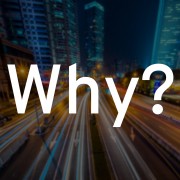Six Cool Facts About the New Waves of Bikeshare
Bikes Make Life Better is a consulting firm dedicated to helping large organizations to put people on bikes. Kurt Wallace, Co-Founder and Director, discusses the potential for the future of public and private bikeshare. He likens the proliferation of bikeshare systems to that of the use of cell phones, “First there was one cell phone, and now there are a zillion different kinds.”
Many conventional public bikeshare systems share these features:
- Large systems – thousands of bikes.
- Public systems that are reliant on stations.
Private bikeshare, in contrast, seems to get less attention in the modern bikeshare era.
A good example of the practicality that private bikeshare has to offer is Facebook’s use of the system. Facebook offers “different trip types and different needs” for its employees with an inventory of bikes that are faster, lighter, and have different gear settings.
Kurt identifies the need that hotels might have for mission-based private bikeshare.“The underlying idea is the same: someone arrives at your facility, your city, your hotel and they need transportation. In a lot of cases we don’t want someone to bring their own car… It makes perfect sense for the place you’re staying to provide you with bikeshare – a fleet of bikes designed for certain trip types.”
There is also a security component to bikeshare programs. “There are lots of reasons why you’ve seen more and more cops on bikes. They can get to things faster, they’re closer to the ground. For one thing, they can hear.” These benefits are not confined to private corporations, they can be advantageous to municipalities and state agencies as well.
A loaner fleet is a system in which a facility manages a fleet of bikes that can be checked out on an individual basis.
“Dude, where’s my bike?”
“Using your smartphone you can check this bike out, from wherever you find it. I check out the bike, I ride it away, and I leave it somewhere else, not at a dock, but just locked properly inside the service area.” This is what Kurt introduces as the next generation of bikeshare technology. It exists in Phoenix, Arizona. The entire configuration attached to each individual bike allows the user to check out a single bike from any location.
In the lock 8 system, the locks report to GPS, allowing the whole system to run on one bike. “The key difference here of course, is you can use any kind of bike. Picture citybike where we started: this big heavy thing, all the bikes look the same. Suddenly, the bikes don’t look the same and I can have different kinds of bikes.”
”Last, but not least: pilots are cool,” Kurt concludes. “You start with whatever you need, prove the case, and then expand on it really simply.”
Bikeshare systems offer seamless multi-modal solutions to many contemporary Transportation Demand Management challenges.
RideAmigos offers the perfect platform to promote multi-modal collaboration with bikeshare systems. Together, they pave the way for less congestion, less pollution, and a happier commute.






Jennifer Hass, Community Transit asks: “Bikeshare by its nature requires urban density and credit card ownership – how are bikeshare companies managing issues of social equity and providing bikes where they’re needed most?”
Kurt replies: Good bikeshare design covers areas of efficiency and need – where would bikes work well? One question in design is, of course, who are the users and how will the system be supported financially. Now that we’re in later generations of bikeshare technology, we’re able to expect that a system will offer multiple ways support – municipal funding, easy use of tourists and other visitors, and lower barriers to entry such as RFID cards instead of just credit cards. We expect bike share to move farther into the ‘transportation equity’ conversation as it becomes clear just how efficient and fair it can be.